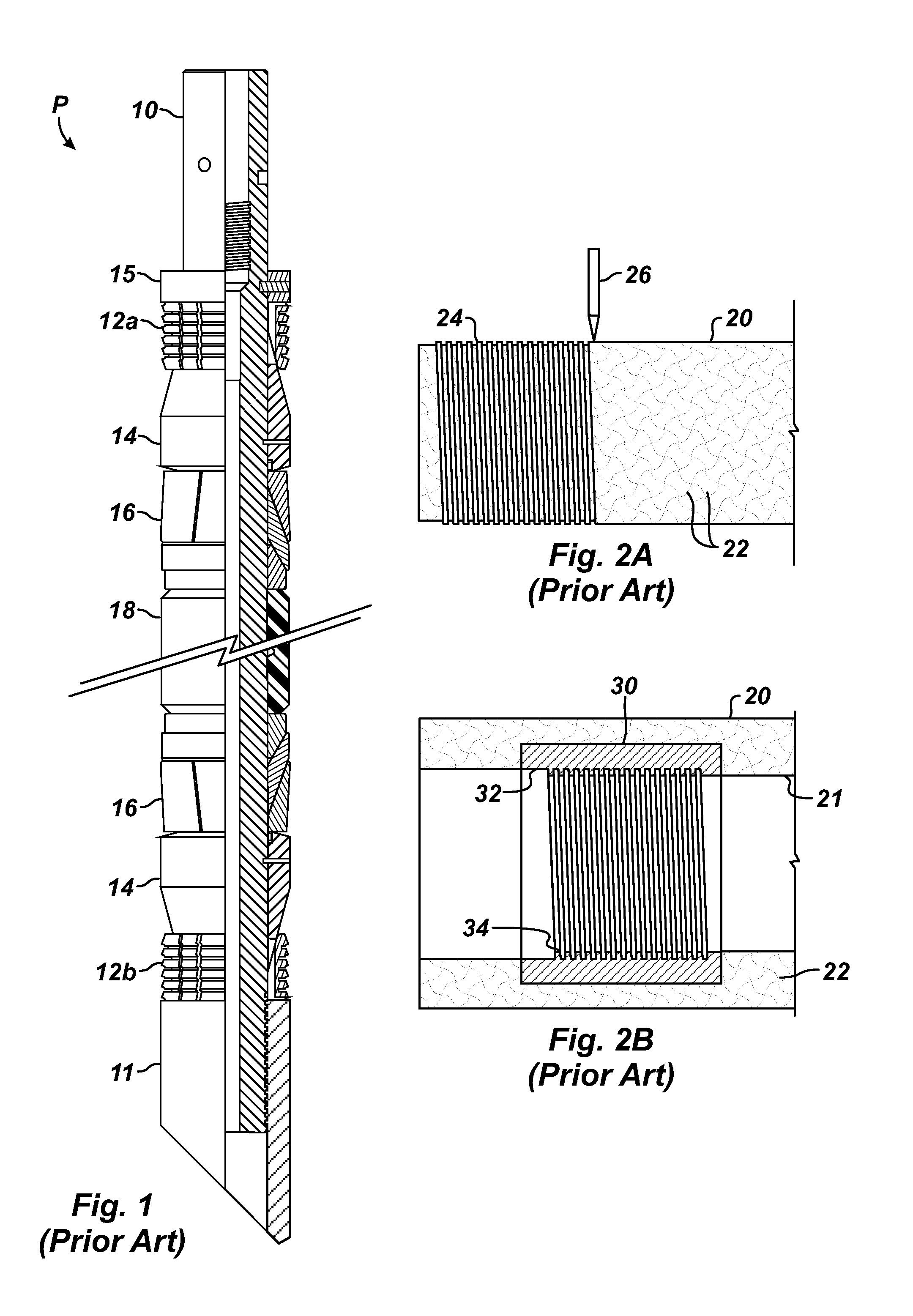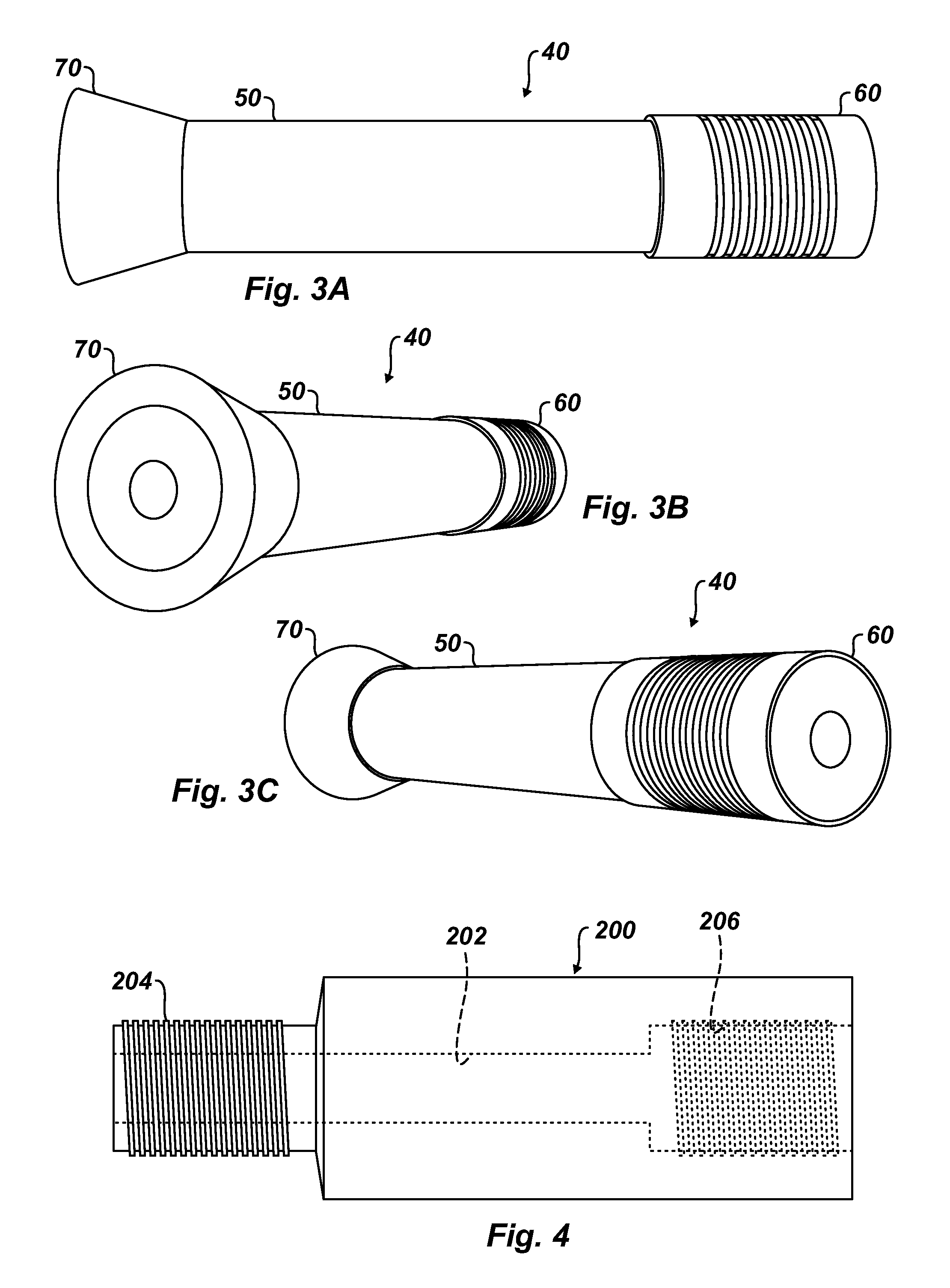Thread Manufacture for Filament Wound Mandrel
a technology thread, which is applied in the direction of screw threads, other domestic articles, drilling pipes, etc., can solve the problems of reducing and reducing the consolidation of filament wound mandrels to allow, so as to reduce or eliminate the typical machining time and increase the strength of threads
- Summary
- Abstract
- Description
- Claims
- Application Information
AI Technical Summary
Benefits of technology
Problems solved by technology
Method used
Image
Examples
Embodiment Construction
[0040]FIGS. 3A-3C illustrate views of core components 40 for forming a composite mandrel having internal and external threads according to the present disclosure. As an example, FIG. 4 illustrates a mandrel 200 composed of a composite material, such as wound filament and resin matrix, which has been formed using the core components 40 of FIGS. 3A-3C. On the mandrel 200 in FIG. 4, male thread 204 and female thread 206 are integrated into the composite mandrel 200 during fabrication and are not formed by machining.
[0041]As shown in FIGS. 3A-3C, the core components 40 include a tooling core or bar 50 about which filament of a composite mandrel is wound to form a cylindrical mandrel. In the present configuration, the tooling core 50 is a tooling piece used to create the inner bore of a composite tube for the cylindrical mandrel or other disclosed component. In this case, the tooling core 50 has an OD generally equal to the desired ID of the formed mandrel. The tooling core 50 is typical...
PUM
| Property | Measurement | Unit |
|---|---|---|
| Thickness | aaaaa | aaaaa |
| Shape | aaaaa | aaaaa |
| Width | aaaaa | aaaaa |
Abstract
Description
Claims
Application Information
 Login to View More
Login to View More - R&D
- Intellectual Property
- Life Sciences
- Materials
- Tech Scout
- Unparalleled Data Quality
- Higher Quality Content
- 60% Fewer Hallucinations
Browse by: Latest US Patents, China's latest patents, Technical Efficacy Thesaurus, Application Domain, Technology Topic, Popular Technical Reports.
© 2025 PatSnap. All rights reserved.Legal|Privacy policy|Modern Slavery Act Transparency Statement|Sitemap|About US| Contact US: help@patsnap.com



